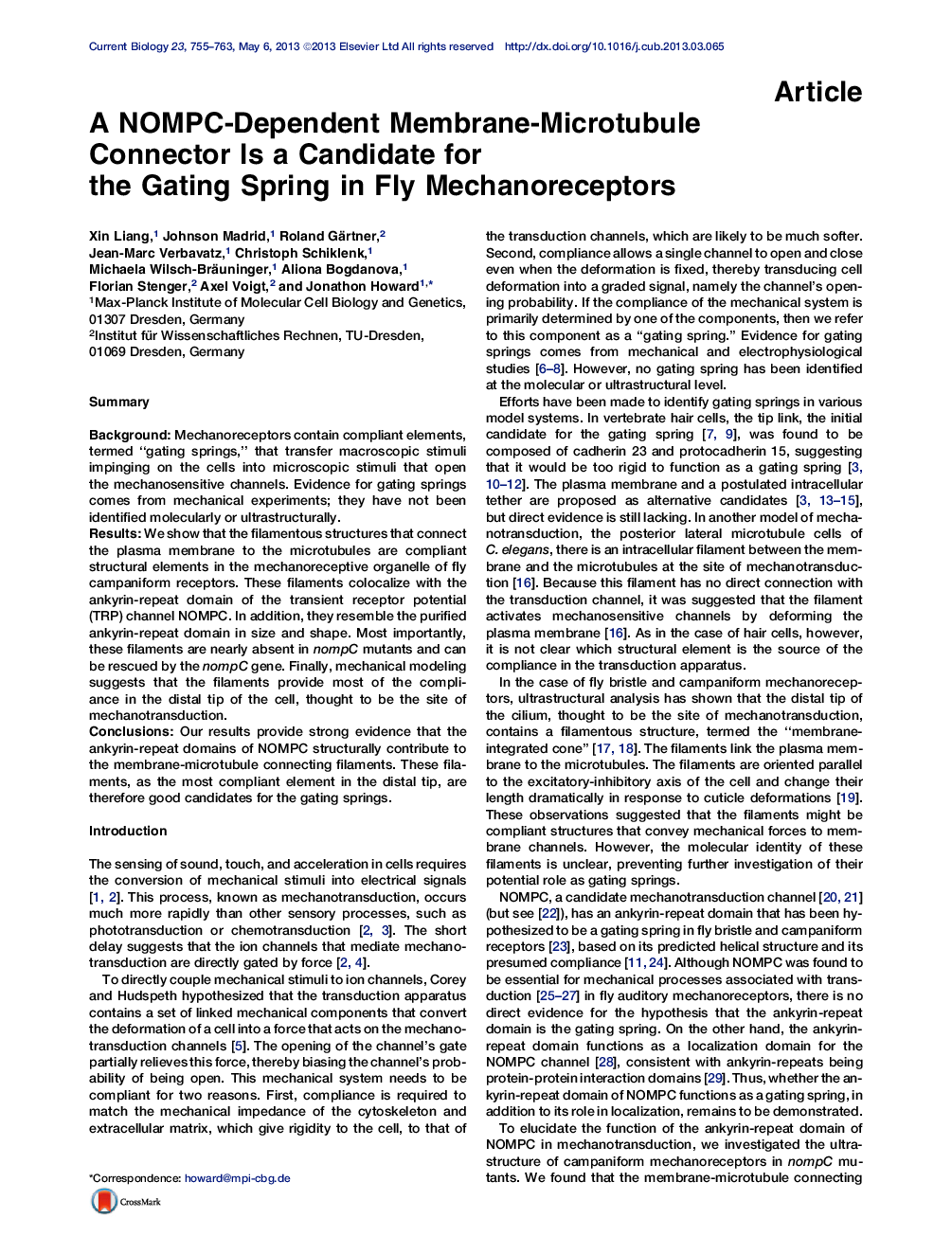| Article ID | Journal | Published Year | Pages | File Type |
|---|---|---|---|---|
| 2042766 | Current Biology | 2013 | 9 Pages |
•A membrane-microtubule connector (MMC) is a relatively compliant structure•NOMPC’s ankyrin repeats colocalize with the MMC and resemble it in shape and size•MMCs are absent in nompC mutants and rescued by the nompC gene•MMCs provide most of the compliance at the site of mechanotransduction
SummaryBackgroundMechanoreceptors contain compliant elements, termed “gating springs,” that transfer macroscopic stimuli impinging on the cells into microscopic stimuli that open the mechanosensitive channels. Evidence for gating springs comes from mechanical experiments; they have not been identified molecularly or ultrastructurally.ResultsWe show that the filamentous structures that connect the plasma membrane to the microtubules are compliant structural elements in the mechanoreceptive organelle of fly campaniform receptors. These filaments colocalize with the ankyrin-repeat domain of the transient receptor potential (TRP) channel NOMPC. In addition, they resemble the purified ankyrin-repeat domain in size and shape. Most importantly, these filaments are nearly absent in nompC mutants and can be rescued by the nompC gene. Finally, mechanical modeling suggests that the filaments provide most of the compliance in the distal tip of the cell, thought to be the site of mechanotransduction.ConclusionsOur results provide strong evidence that the ankyrin-repeat domains of NOMPC structurally contribute to the membrane-microtubule connecting filaments. These filaments, as the most compliant element in the distal tip, are therefore good candidates for the gating springs.
